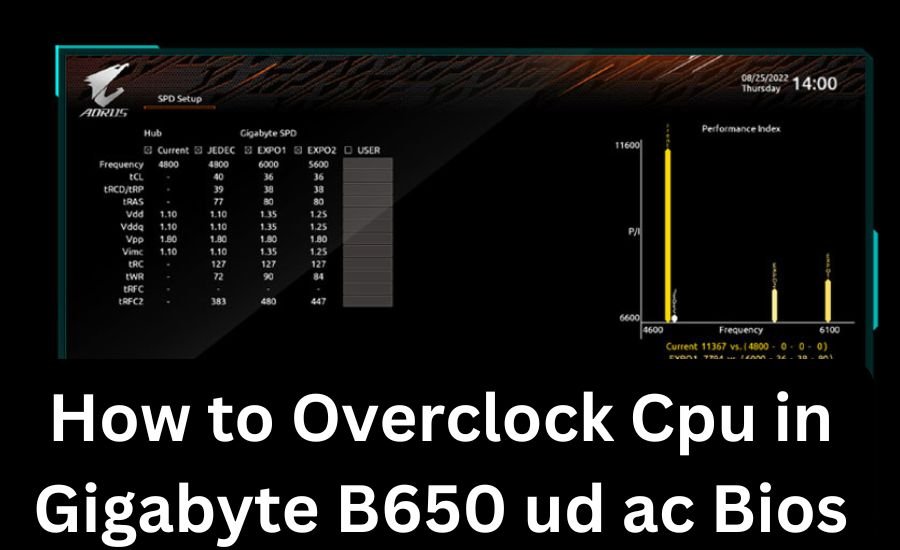Do you want to learn how to overclock CPU in Gigabyte B650 UD AC BIOS? Overclocking can make your computer faster, perfect for gaming or heavy tasks. Don’t worry; it’s not as tricky as it sounds.
This guide will show you easy steps to safely overclock your CPU in the Gigabyte B650 UD AC BIOS. By the end, your PC will run faster and better than ever. Let’s jump in and make your computer supercharged!
What Does Overclocking a CPU Mean?
Overclocking means making your CPU run faster than its default speed. Think of it like a turbo boost for your computer. This process can improve performance for gaming, editing, or multitasking.
Overclocking works by increasing the clock speed of your CPU. However, higher speeds also mean more heat, so you need to ensure proper cooling. For users of the Gigabyte how to overclock cpu in gigabyte b650 ud ac bios, overclocking can unlock new potential in your system.
If done carefully, overclocking won’t harm your computer. The Gigabyte B650 UD AC BIOS provides tools to make this process easier and safer for users.
Why Overclocking Works Great on Gigabyte B650 UD AC BIOS
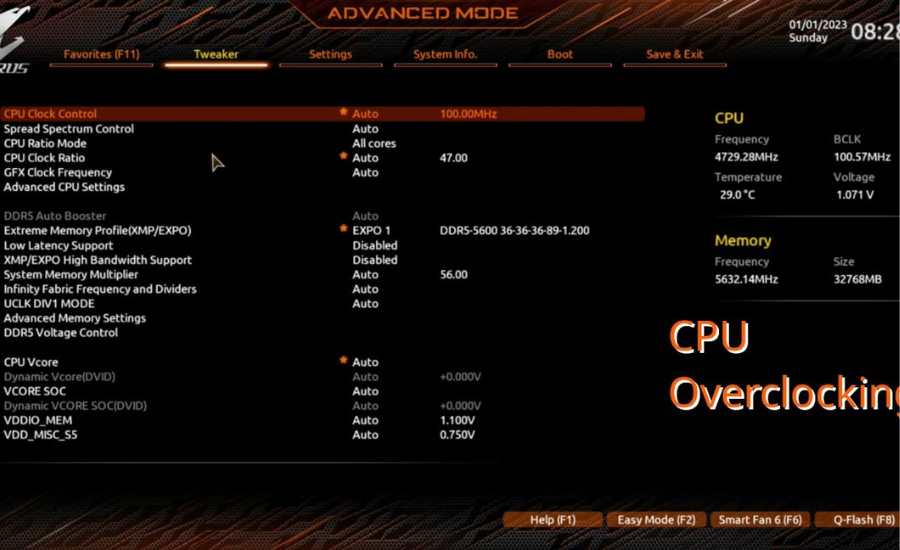
The Gigabyte B650 UD AC BIOS has features designed for overclocking. It gives you full control over CPU settings, making it easy to adjust speeds. This motherboard is built for performance and stability.
Another reason why it’s great is its user-friendly interface. Even if you are a beginner, you can navigate the BIOS settings easily. The how to overclock cpu in gigabyte b650 ud ac bios ensures you can overclock your CPU without much risk.
To get the best results, pair this motherboard with a good cooling system. Overclocking works best when heat is managed effectively.
Steps to Access the BIOS on Gigabyte B650 UD AC Motherboard
To overclock your CPU, you first need to access the BIOS. Start by restarting your computer and pressing the Delete key during startup. This will take you to the BIOS menu.
In the BIOS, find the Advanced CPU Settings or similar options. The Gigabyte B650 UD AC makes it simple to locate the right menu for overclocking. Take your time to explore and understand the interface.
Before making any changes, note down the default settings. This will help you reset if something goes wrong. Now you’re ready to overclock safely.
Preparing Your PC for CPU Overclocking
Before you begin overclocking, check your PC’s cooling system. how to overclock cpu in gigabyte b650 ud ac bios increases heat, so ensure your fans or liquid coolers are working well.
Make sure your power supply can handle the extra energy demand. A reliable power source ensures stable performance during overclocking.
Updating your BIOS to the latest version is another crucial step. Gigabyte often releases updates to improve stability and features for overclocking.
Read More: How-to-enter-dell-precision-bios-3576
How to Overclock CPU in Gigabyte B650 UD AC BIOS: A Beginner’s Guide
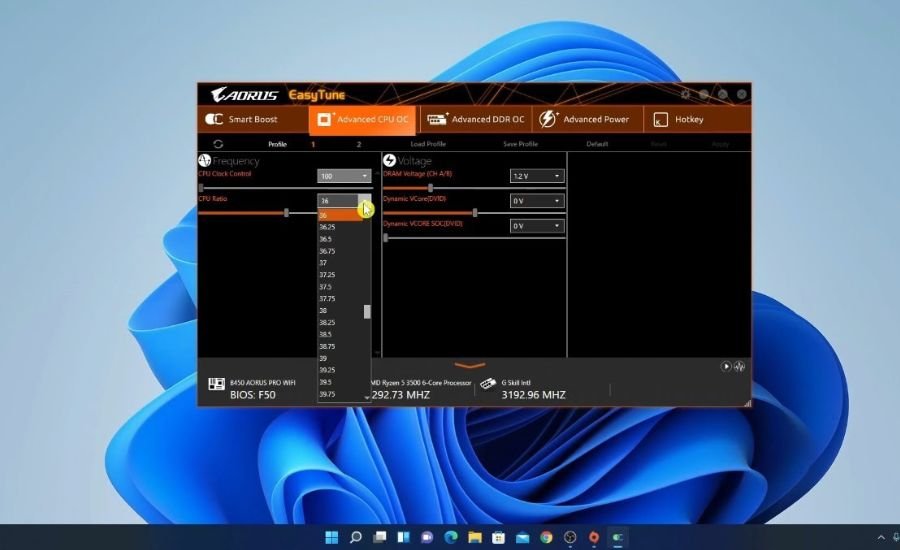
To begin overclocking, go to the Advanced Frequency Settings in the BIOS. Adjust the CPU clock ratio to increase the speed. Start with small increments to avoid system instability.
Next, test the stability of your system after each change. The how to overclock cpu in gigabyte b650 ud ac bios may have built-in stress tests, or you can use third-party software. This ensures your CPU can handle the new settings.
Remember, overclocking should be done gradually. Jumping to high speeds too quickly can cause your computer to crash or overheat.
Adjusting Core Settings in Gigabyte B650 UD AC BIOS
Core voltage is a key setting for overclocking. Increasing voltage helps the CPU handle higher speeds but also generates more heat. Adjust the voltage carefully in the BIOS.
The B650 UD AC BIOS allows you to fine-tune each core individually. how to overclock cpu in gigabyte b650 ud ac bios is helpful if you want to overclock specific cores for certain tasks.
Always monitor your CPU temperature while making adjustments. Tools like HWMonitor can help you keep an eye on system heat levels.
Tips for Safe CPU Overclocking on Gigabyte B650 UD AC BIOS
Always prioritize safety when overclocking your how to overclock cpu in gigabyte b650 ud ac bios Start by setting a modest clock speed increase to avoid overheating or system crashes.
Use stress-testing software like Prime95 to check stability after overclocking. If your system passes the test, you can gradually increase the speed further.
Make sure your how to overclock cpu in gigabyte b650 ud ac bios has good airflow. Extra fans or liquid cooling can prevent overheating during heavy tasks.
How to Test Stability After Overclocking Your CPU
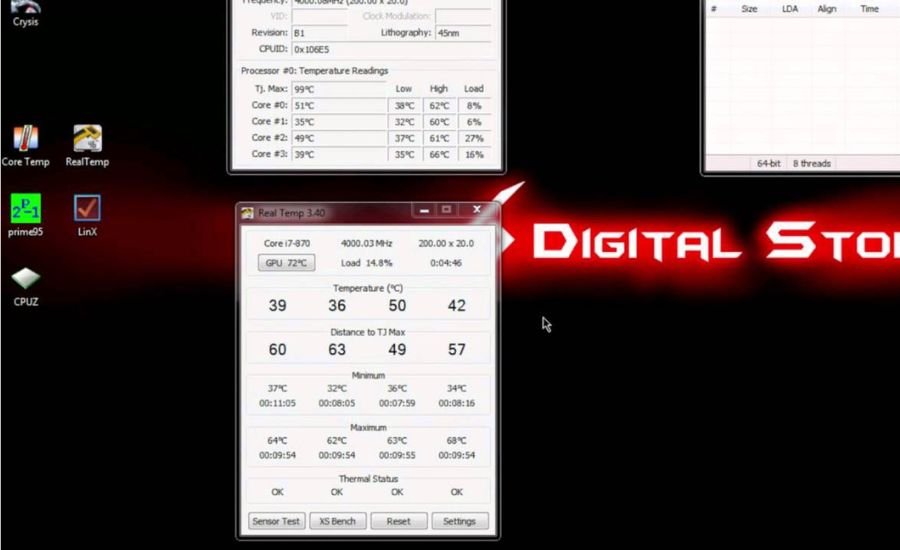
Once you how to overclock cpu in gigabyte b650 ud ac bios, testing is essential. Programs like Cinebench and Prime95 can check if your CPU runs smoothly at the new speed.
Run stress tests for at least 30 minutes. This ensures the system won’t crash during demanding tasks. Stability tests are easy to use and give quick results.
If your system fails the test, return to the BIOS and lower the clock speed slightly. This ensures safe and reliable performance.
Common Overclocking Mistakes to Avoid on Gigabyte B650 UD AC BIOS
One common mistake is setting the clock speed too high too quickly. Always increase speeds in small steps to avoid damaging your CPU.
how to overclock cpu in gigabyte b650 ud ac bios cooling solutions is another big error. Overclocking generates heat, so make sure your PC has proper ventilation or liquid cooling.
Lastly, don’t forget to test your system after each adjustment. Skipping this step can lead to system crashes or data loss.
How Overclocking Impacts CPU Performance and Lifespan
how to overclock cpu in gigabyte b650 ud ac bios improves performance, especially for gaming and video editing. However, it can reduce the lifespan of your CPU if not done carefully.
Using tools like the Gigabyte B650 UD AC BIOS, you can control the settings to balance speed and durability. Always monitor temperatures to prevent overheating.
With proper care, overclocking can be a safe way to enhance your computer’s performance for years.
How to Reset Settings if Overclocking Goes Wrong
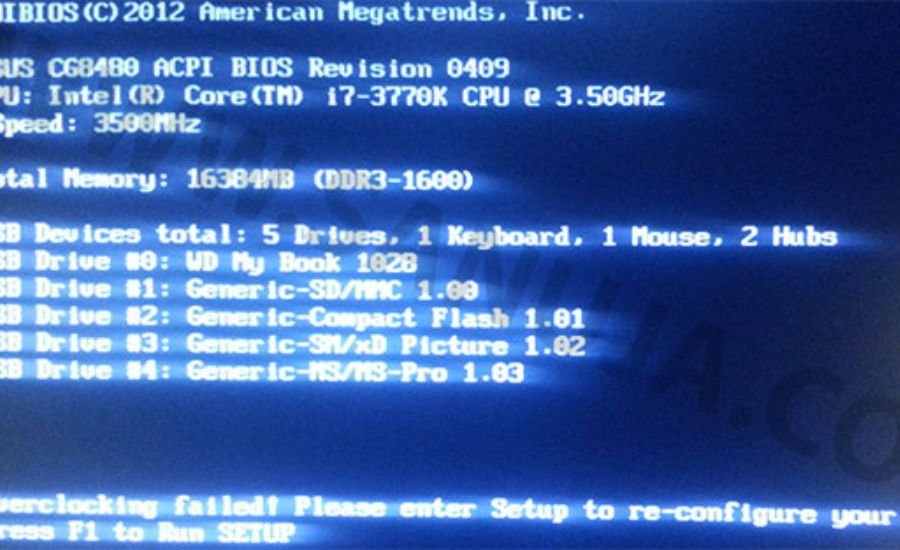
If how to overclock cpu in gigabyte b650 ud ac bios causes problems, resetting is simple. Enter the BIOS and choose the Load Optimized Defaults option. This will return your CPU to its original settings.
You can also clear the CMOS by removing the motherboard battery for a few seconds. This is a quick way to reset all BIOS settings.
Always keep a record of your previous settings. This makes troubleshooting much easier if something goes wrong.
Conclusion
Overclocking your CPU using the Gigabyte how to overclock cpu in gigabyte b650 ud ac bios is a great way to boost your computer’s speed. By carefully following the steps in this guide, you can safely improve your system’s performance for tasks like gaming or editing. Remember to check your cooling system and test your CPU after making changes to ensure everything runs smoothly.
Always start with small adjustments and don’t rush. Overclocking can be fun and rewarding when done safely. With the Gigabyte B650 UD AC BIOS, you have the tools to unlock your CPU’s full potential. Enjoy the faster speeds and better performance!
Do You Know: Frequently-testes-ap-bio-terms-and-concepts
FAQs
Q: Can I overclock any CPU in the Gigabyte B650 UD AC BIOS?
A: No, only CPUs marked as “unlocked” can be overclocked. Check your CPU model first.
Q: Will overclocking my CPU damage it?
A: If done carefully, overclocking is safe. Just make sure your system stays cool.
Q: How do I check if my system is stable after overclocking?
A: Use stress-testing tools like Prime95 or Cinebench to check system stability.
Q: What happens if I overclock too much?
A: Your system may crash or overheat. Reset settings in the BIOS if this happens.
Q: Do I need a special cooling system to overclock?
A: It’s recommended. A good cooling system keeps your CPU from overheating.
Q: Can overclocking make my games run faster?
A: Yes, overclocking can improve gaming performance by boosting CPU speed.
Q: How do I reset my overclocked CPU to default settings?
A: Go to the BIOS and select “Load Optimized Defaults,” or clear the CMOS.
